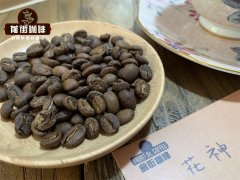Coffee beans with low acidity are recommended for coffee beans with low acidity.
We know that coffee beans from different countries and producing areas will have different flavor and taste, and the different treatment of coffee beans is also one of the reasons, such as the coffee from Ethiopia Yega Sheffield, its acidity is so bright. So when it comes to low-acidity coffee, Qianjie Coffee first recommends coffee beans from Brazilian countries.
Brazil is not only the world's largest coffee producer, but also the most complex. It turns out that everything from mass-produced coffee to the cheapest coffee in the world to elegant coffee, which is regarded as the best espresso brewing in the world. In Brazil, it is not uncommon to use four different processing methods to remove fruit from beans, and all four methods are used on the same farm during the same harvest.
Brazilian coffee is not a highly cultivated thing. Brazil ranges from 2000 to 4000 feet above sea level, well below the more than 5000 elevations common for boutique coffee produced in Central America, Colombia and East Africa. The lower growth altitude means that Brazilian coffee has relatively low acidity. At best, they tend to be round, sweet and nuanced, rather than large and bright.
A few years ago, the Brazilian government deregulated the coffee industry, allowing large farms to sell coffee directly to consuming countries, regardless of the grading structure set by the government. As a result, coffee like Santos or Bourbon Santos also enters the American market directly from large farms called fazendas.
Quality coffee shipped from these farms to consumer countries is usually dry-processed or "natural" coffee. However, Brazilian estates may also be wet-processed, which will make them brighter in the cup, or they may be what Brazilians call pulpy natural or semi-washed coffee, which is dried without a skin. but the sticky fruit pulp still sticks to the beans. Usually, these fleshy natural coffees absorb sweetness from the pulp and are as full and sweet in the cup as dry coffee.

In any case, bitterness is a risk taken by Brazilian farmers when they try to get the round, sweet and fruity taste of the best dry coffee. Fazenda Vista Alegre, a Brazilian farm, is famous in the United States for allowing its dry-processed coffee to dry directly on trees rather than after picking. Unfortunately, these interesting coffees often reflect the disadvantages of dry processing rather than the advantages. The Vista Alegre coffee I often drink shows a slight edge of dryness damage.
The growing area of Brazil. The three main growing areas provide most of the high-end Brazilian coffee. The oldest Mogiana, located on the border between S ã o Paulo and Minas Gerais, north of S ã o Paulo, is famous for its deep, fertile red soil and sweet, full, round coffee. Located in South Minas in the southern state of Minas Gerais northeast of S ã o Paulo.
(Sul Minas) the rugged hills are the heart of Brazil's coffee country and are home to two of the largest and best-known Fazendas Ipanema and Monte Alegre. Serrado, a semi-arid plateau around Patrosinio, located between Sao Paulo and Brasilia, is a relatively new growing area. It has the worst scenery of the three areas with new towns and plateaus, but it can be said to be the most promising area for coffee quality.
Important Notice :
前街咖啡 FrontStreet Coffee has moved to new addredd:
FrontStreet Coffee Address: 315,Donghua East Road,GuangZhou
Tel:020 38364473
- Prev

How is the best coffee made? what are the key factors that affect the taste of coffee?
Coffee is already an indispensable way of life for most people, from instant coffee, Italian coffee, and now popular various brewing utensils to brew coffee, hand-brewed coffee and so on, and fine coffee is the darling of modern coffee drinks. However, no matter how the coffee appears in front of people, the quality of the coffee can not be ignored.
- Next

How about Guatemalan coffee? is the variety of Guatemalan boutique coffee based on iron pickup?
The highlands of Guatemala produce some of the best and most distinctive coffees in the world. The most outstanding of these highland coffees are produced in the mountain basins around the simple and beautiful colonial city of Antigua, Guatemala, which combines complex nuances (tobacco, spices, flowers, and occasionally chocolate) and acidity, from mild brightness to strong acidity.
Related
- Beginners will see the "Coffee pull flower" guide!
- What is the difference between ice blog purified milk and ordinary milk coffee?
- Why is the Philippines the largest producer of crops in Liberia?
- For coffee extraction, should the fine powder be retained?
- How does extracted espresso fill pressed powder? How much strength does it take to press the powder?
- How to make jasmine cold extract coffee? Is the jasmine + latte good?
- Will this little toy really make the coffee taste better? How does Lily Drip affect coffee extraction?
- Will the action of slapping the filter cup also affect coffee extraction?
- What's the difference between powder-to-water ratio and powder-to-liquid ratio?
- What is the Ethiopian local species? What does it have to do with Heirloom native species?

